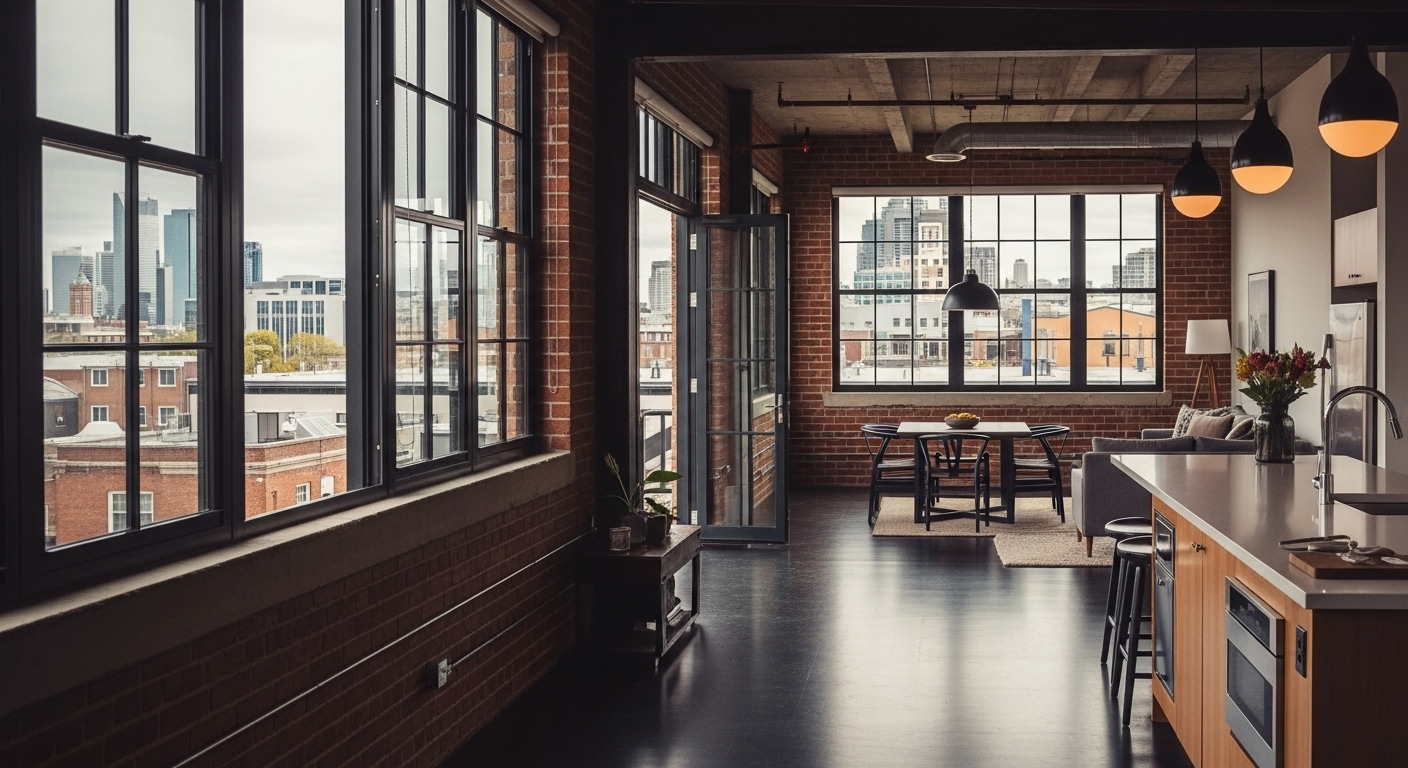What to Know Before Renting a Loft Apartment
Loft apartments offer a unique living experience with their open floor plans, high ceilings, and industrial aesthetics. Originally converted from commercial or industrial buildings, these spaces have become increasingly popular among urban dwellers seeking distinctive homes. Before signing a lease for a loft apartment, it's essential to understand their unique characteristics, potential challenges, and whether this housing style aligns with your lifestyle preferences and practical needs.

Understanding the Characteristics of Loft Apartments for Rent
Loft apartments typically feature several distinctive elements that set them apart from conventional apartments. Most notably, they offer open floor plans with few or no interior walls dividing the space, except for bathrooms. High ceilings ranging from 10 to 20 feet create an airy atmosphere, often complemented by large windows that flood the space with natural light. Many loft apartments retain original structural elements like exposed brick walls, ductwork, wooden beams, or concrete floors, preserving the building’s industrial heritage. These architectural features contribute to the unique aesthetic appeal that makes rental loft apartments so desirable for many tenants.
Key Considerations When Searching for Rental Loft Apartments
When evaluating potential loft apartments, several practical considerations deserve attention. First, assess the noise levels both from outside and within the building, as industrial conversions may have thinner walls or less insulation than purpose-built residences. Heating and cooling costs can be significantly higher due to large open spaces and high ceilings, so inquire about typical utility expenses. Storage space is often limited in lofts, with fewer built-in closets or cabinets than traditional apartments. Additionally, check whether the building has been properly converted for residential use with appropriate electrical capacity, plumbing systems, and safety features that meet current residential codes.
How to Find the Right Loft Apartments for Your Lifestyle
Finding an ideal loft apartment requires matching the space to your personal preferences and daily routines. Begin by determining your location priorities, such as proximity to work, public transportation, and amenities. Consider whether you prefer a true industrial conversion or a new construction building with loft-style features. Think about the floor plan that would best accommodate your lifestyle—some lofts offer completely open spaces while others have partial walls or platforms delineating functional areas. Also evaluate building amenities that matter to you, such as elevators, parking options, laundry facilities, security systems, or shared community spaces, as these vary widely between loft buildings.
The Differences Between Hard Lofts and Soft Lofts
The loft apartment market generally distinguishes between two primary categories: hard lofts and soft lofts. Hard lofts represent authentic conversions of industrial or commercial buildings, maintaining original architectural elements and often featuring more irregular layouts. These spaces may have quirks like unusual support columns or non-rectangular rooms reflecting their original non-residential purpose. Soft lofts, by contrast, are newly constructed buildings designed to mimic loft aesthetics while incorporating modern building standards from the outset. These typically offer more standardized layouts, better insulation, and more efficient heating and cooling systems, but may lack some of the authentic character of true industrial conversions.
Loft Apartment Rentals for Seniors: Special Considerations
Seniors considering loft apartments should evaluate several age-specific factors before renting. Accessibility is paramount—many converted industrial buildings lack elevators or have limited accessibility features, potentially creating challenges for residents with mobility issues. The open layout can present both advantages and disadvantages: while fewer walls means fewer obstacles to navigate, the lack of defined spaces might complicate furniture arrangement for those with mobility devices. Some seniors appreciate the single-level living that most lofts provide, eliminating the need for stairs within the unit. When considering loft apartment rentals for seniors, it’s also worth investigating whether the building community includes residents of various age groups or caters specifically to older adults.
Cost Considerations for Loft Apartment Rentals
Loft apartments typically command premium rental prices compared to conventional apartments of similar square footage in the same neighborhoods. The unique architectural features and aesthetic appeal contribute to this price difference. In major urban markets, authentic hard lofts in desirable locations can cost 10-30% more than standard apartments. Additionally, prospective renters should budget for potentially higher utility costs due to the challenges of heating and cooling large, open spaces with high ceilings.
| Location Type | Average Monthly Rent (1,000 sq ft) | Average Monthly Utilities | Typical Additional Fees |
|---|---|---|---|
| Urban Hard Loft | $1,800-$3,500 | $150-$300 | Parking: $150-$300 |
| Urban Soft Loft | $1,600-$3,200 | $120-$250 | Amenities fee: $50-$150 |
| Suburban Loft | $1,200-$2,200 | $100-$200 | Pet fee: $25-$75 monthly |
Prices, rates, or cost estimates mentioned in this article are based on the latest available information but may change over time. Independent research is advised before making financial decisions.
Making the Final Decision on a Loft Apartment
When deciding whether a loft apartment is right for you, visit multiple properties at different times of day to assess noise levels, lighting, and overall atmosphere. Ask current residents about their experiences if possible, particularly regarding climate control effectiveness and utility costs. Review the lease carefully for any unique terms related to the building’s former industrial status or historic designation. Consider how your furniture and possessions will fit into the open layout, as traditional furniture arrangements may not work well in loft spaces. Finally, ensure you understand all building policies regarding renovations or modifications, as many loft buildings have stricter rules about alterations to preserve architectural elements or comply with historic building codes.




